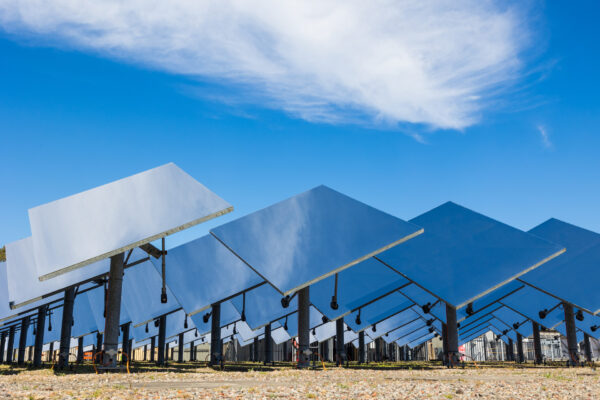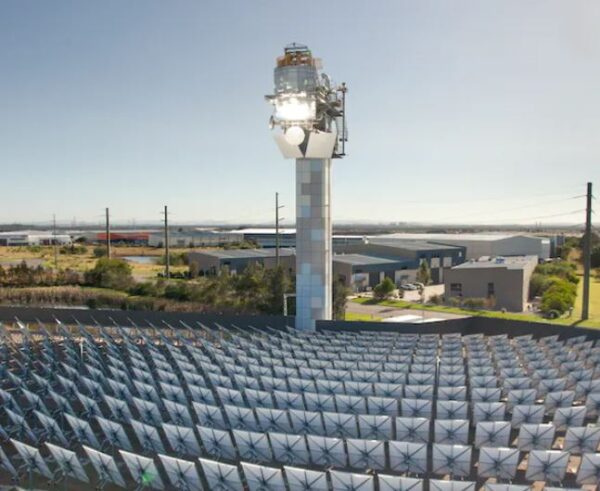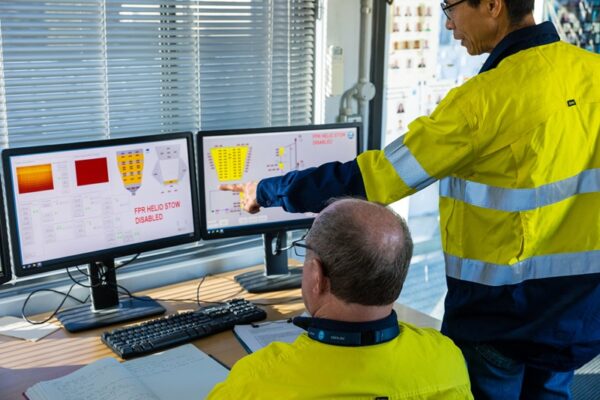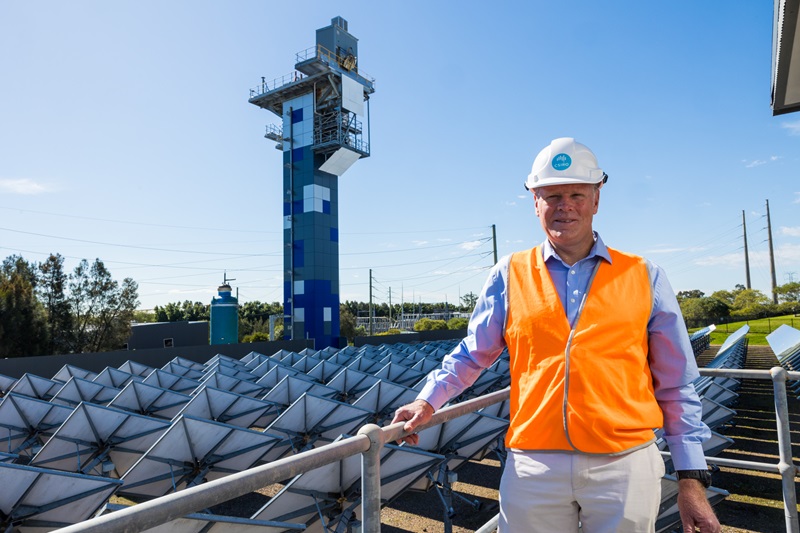Australia’s Commonwealth Scientific and Industrial Research Organisation, better known as the CSIRO, is placing tiny ceramic particles at the centre of a new concentrated solar thermal (CST) process. It says the novel concept increases temperatures in the process from 500°C to 800°C, and possibly over 1000°C.
This, it says, holds promise for decarbonising heavy industry, which can require extreme heat for processing. It also overcomes some of the limitations of heat transfer fluids traditionally used in concentrated solar thermal (CST) technologies, the CSIRO says.

Image: CSIRO
The heated ceramic particles can store energy as heat for up to 15 hours, the government agency added.
Just as a quick recap, concentrated solar thermal (CST) technologies use mirrors to concentrate sunlight, converting it to heat, which can then be stored or used to generate electricity.
How the “falling” ceramic particles method works
The CSIRO operates a CST pilot plant in Newcastle, New South Wales, known as the CSIRO Energy Centre. It has around 400 mirrors. At this research facility, the team has been experimenting with new ways to store its concentrated solar energy, looking beyond commonly used heat transfer fluids like molten salt and old – which Wes Stein, the CSIRO’s Chief Scientist for Solar Technologies, says can only handle temperatures of 600°C and 400°C respectively.
The ceramic particles, only the other hand, can endure temperatures over 1000°C. “These particles not only absorb the sun’s heat but also store it, simplifying the system and reducing costs,” the CSIRO said.

Image: CSIRO
The “falling” component of this new method refers to the team using gravity to heat the dark-hued ceramic particles. “The particles are dropped from a hopper at the top of the tower, and heated as they pass through focused solar energy,” the CSIRO said. “Unlike traditional methods that rely on steel tubes, the particles fall freely. This approach avoids the heat limitations of steel. Once heated, they’re stored in a silo. When needed, they’re used to produce steam for power generation or other industrial tasks.”
In developing this free falling method, however, the team encountered some difficulties. “When particles fell too fast, they spread out. This let sunlight through and reduced efficiency,” the CSIRO said. To fix this, the team landed on a ‘catch and release’ method where, after falling a short distance, particles land in a trough, slowing them before they were allowed to fall into the next trough.

Dr Jin-Soo Kim, who leads the CSIRO’s solar technologies team, said the group recently achieved a critical milestone temperature of 803°C at the falling particle receiver using the new process.
“This is significant because it creates the opportunity for greater renewable energy storage when combined with our patented heat exchanger,” Jin-Soo said. “Over eight years of development and thousands of hours were invested to reach this outcome.”
“The CSIRO CST falling particle technology can provide renewable heat at the same high temperature that coal and gas deliver, and over multiple hours,” Dominic Zaal, Director of the Australian Solar Thermal Research Institute (ASTRI), said.
“In addition to being an ideal technology to replace current fossil-fuel based power generation assets, it is also an excellent technology to meet higher temperature requirements for mineral processing,” Zaal added.
This content is protected by copyright and may not be reused. If you want to cooperate with us and would like to reuse some of our content, please contact: editors@pv-magazine.com.









6 comments
By submitting this form you agree to pv magazine using your data for the purposes of publishing your comment.
Your personal data will only be disclosed or otherwise transmitted to third parties for the purposes of spam filtering or if this is necessary for technical maintenance of the website. Any other transfer to third parties will not take place unless this is justified on the basis of applicable data protection regulations or if pv magazine is legally obliged to do so.
You may revoke this consent at any time with effect for the future, in which case your personal data will be deleted immediately. Otherwise, your data will be deleted if pv magazine has processed your request or the purpose of data storage is fulfilled.
Further information on data privacy can be found in our Data Protection Policy.